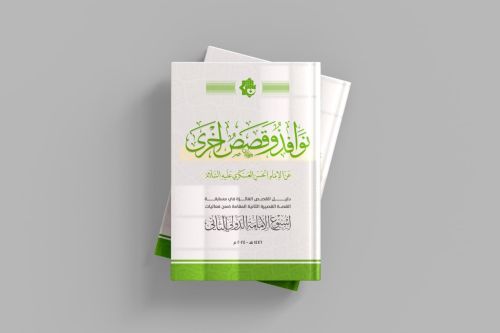

Grammar


Tenses


Present

Present Simple

Present Continuous

Present Perfect

Present Perfect Continuous


Past

Past Simple

Past Continuous

Past Perfect

Past Perfect Continuous


Future

Future Simple

Future Continuous

Future Perfect

Future Perfect Continuous


Parts Of Speech


Nouns

Countable and uncountable nouns

Verbal nouns

Singular and Plural nouns

Proper nouns

Nouns gender

Nouns definition

Concrete nouns

Abstract nouns

Common nouns

Collective nouns

Definition Of Nouns


Verbs

Stative and dynamic verbs

Finite and nonfinite verbs

To be verbs

Transitive and intransitive verbs

Auxiliary verbs

Modal verbs

Regular and irregular verbs

Action verbs


Adverbs

Relative adverbs

Interrogative adverbs

Adverbs of time

Adverbs of place

Adverbs of reason

Adverbs of quantity

Adverbs of manner

Adverbs of frequency

Adverbs of affirmation


Adjectives

Quantitative adjective

Proper adjective

Possessive adjective

Numeral adjective

Interrogative adjective

Distributive adjective

Descriptive adjective

Demonstrative adjective


Pronouns

Subject pronoun

Relative pronoun

Reflexive pronoun

Reciprocal pronoun

Possessive pronoun

Personal pronoun

Interrogative pronoun

Indefinite pronoun

Emphatic pronoun

Distributive pronoun

Demonstrative pronoun


Pre Position


Preposition by function

Time preposition

Reason preposition

Possession preposition

Place preposition

Phrases preposition

Origin preposition

Measure preposition

Direction preposition

Contrast preposition

Agent preposition


Preposition by construction

Simple preposition

Phrase preposition

Double preposition

Compound preposition


Conjunctions

Subordinating conjunction

Correlative conjunction

Coordinating conjunction

Conjunctive adverbs


Interjections

Express calling interjection


Grammar Rules

Passive and Active

Preference

Requests and offers

wishes

Be used to

Some and any

Could have done

Describing people

Giving advices

Possession

Comparative and superlative

Giving Reason

Making Suggestions

Apologizing

Forming questions

Since and for

Directions

Obligation

Adverbials

invitation

Articles

Imaginary condition

Zero conditional

First conditional

Second conditional

Third conditional

Reported speech


Linguistics

Phonetics

Phonology

Linguistics fields

Syntax

Morphology

Semantics

pragmatics

History

Writing

Grammar

Phonetics and Phonology

Semiotics


Reading Comprehension

Elementary

Intermediate

Advanced


Teaching Methods

Teaching Strategies

Assessment
Classifiers
المؤلف:
PETER SVENONIUS
المصدر:
Adjectives and Adverbs: Syntax, Semantics, and Discourse
الجزء والصفحة:
P21-C2
2025-03-27
428
Classifiers
Many languages have head-like elements in the DP which are called “classifiers” (cf. Aikhenvald 2000 for an overview). These show a range of uses, from determiner-like (cf. Cheng and Sybesma 1999 on Chinese) to being involved in enumeration, quantification, or division of masses (Borer 2005a) and other functions.1 Classifiers often serve two or more of these functions simultaneously and are often furthermore in complementary distribution with determiners or plural markers, making general statements about relative order difficult, but some generalizations emerge.
For example, the most typical classifier sorts nominal referents by characteristics such as shape (a “sortal” classifier), and makes them countable or quantifiable (a “numeral” classifier). Grinevald (2000) in particular argues that it is typical of numeral classifiers that they sort by shape. But a few languages differentiate the two functions, in which case the numeral classifier can be seen to be outside the sortal classifier, as in the Mayan language Akatek as described by Zavala (2000) (exx. here from his pp. 117 and 123).
Numeral classifiers in this language distinguish human, animal, and inanimate nouns (here only the inanimate one is shown). The sortal classifier distinguishes a dozen or more shapes (“smooth,” “long three-dimensional,” “erect,” half circle,” “round,” “wide flat,” “small spherical,” “separate,” etc.). Note in (7a–b) that the same noun can appear with different classifiers, depending on how the referent is perceived.
A third important type of classifier is the noun classifier, which typically sorts nouns by material qualities or essences (see Craig 1986, Grinevald 2000). These sometimes cooccur with sortal or numeral classifiers, and again, Akatek provides an example of cooccurrence. Akatek has a set of fourteen noun classifiers (“man, “woman,” “animal,” “tree,” “corn,” “water,” “salt,” etc.) alongside the three numeral classifiers and the set of sortal classifiers. All three types are illustrated in (8) (adapted from Zavala 2000: 126–127).2
Noun classifier systems may resemble gender systems, in that a noun may be conventionally associated with a single noun classifier, and may develop into gender systems (Greenberg 1978, Corbett 1991). It is sometimes argued that nominal gender corresponds to a functional projection (cf. e.g. Spanish abuelo ‘grandfather’ ∼ abuela ‘grandmother’ or monje ‘monk’ ∼ monja ‘nun’; cf. Ritter 1993 for references and a dissenting view). If so, it is clear that it is lower than number (cf. e.g. abuelas ‘grandmothers’ etc.).
In general, if a language has plural markers it does not have classifiers, and vice versa (see Borer 2005a: ch. 4 for references and discussion). In some languages, there are plural markers for animate nouns but classifiers for inanimates. In Akatek, the numeral classifier for inanimates, eb’ (cf. 8b–c), is also used as a separate plural marker for human plurals, and may cooccur not only with numeral classifiers but also with noun classifiers, as in (9a–b) (Zavala 2000: 122–123; again, I have isolated noun phrases from sentences in context; see Zavala’s paper for original sentences).
Nor is Akatek the only language in which a plural marker may cooccur with a numeral classifier. Allan (1977: 294) gives the following examples from Yucatec Mayan and Ojibway, respectively. In the Mayan example, the plural marker is optional, but in the Ojibway example, it has a semantic effect.
On the basis of these considerations, three levels of classifier can be identified; I will refer to the numeral classifier as unit, as this is the unit which is counted (it can be equated with Borer’s 2005a #), and to the sortal classifier as sort (like Borer’s Cl); and I will refer to the noun classifier as n, following the discussion in Marantz (2001) of the nature of nominalizing affixes on roots.
In sum, the following hierarchy of classifier types can be discerned, though it should be stressed that most classifier languages have just one which spans two or more of these properties, as argued by Borer (2005a):3
Putting these together with the Art > Pl > N hierarchy, it is relatively clear that Art is above these classifiers, while N is below. The exact position of Pl is partly a matter of guesswork due to the scarcity of clear cooccurrences, but the following seems to be a plausible hypothesis:
The category Pl/sort suggests that those cases in which plurals are noted to cooccur with classifiers have involved either unit classifiers or noun classifiers, not sort classifiers. It has repeatedly been argued that classifiers exist to individuate masses for quantification and counting (cf. in particular Borer 2005a).
At this juncture I leave these categories and turn to phrasal dependents in the DP, namely demonstratives, numerals, and adjectives.
1 On the distinction between classifiers and markers of noun class or gender like the nominal prefixes of the Bantu languages, cf. e.g. Heine (1982), Dixon (1986).
2 Zavala gives sentences from which I have isolated just the noun phrases; in each sentence, an existential predicate (“there is”) precedes the noun phrase, and an adjectival predicate (“lying down “or “round”) follows.
3 It should be noted that Grinevald (2000) argues for an additional type, the genitive classifier, which she argues is function-based (vehicle, edible, artifact, etc.) and is higher than the numeral classifier.
 الاكثر قراءة في Linguistics fields
الاكثر قراءة في Linguistics fields
 اخر الاخبار
اخر الاخبار
اخبار العتبة العباسية المقدسة

الآخبار الصحية















 "المهمة".. إصدار قصصي يوثّق القصص الفائزة في مسابقة فتوى الدفاع المقدسة للقصة القصيرة
"المهمة".. إصدار قصصي يوثّق القصص الفائزة في مسابقة فتوى الدفاع المقدسة للقصة القصيرة (نوافذ).. إصدار أدبي يوثق القصص الفائزة في مسابقة الإمام العسكري (عليه السلام)
(نوافذ).. إصدار أدبي يوثق القصص الفائزة في مسابقة الإمام العسكري (عليه السلام) قسم الشؤون الفكرية يصدر مجموعة قصصية بعنوان (قلوب بلا مأوى)
قسم الشؤون الفكرية يصدر مجموعة قصصية بعنوان (قلوب بلا مأوى)


















